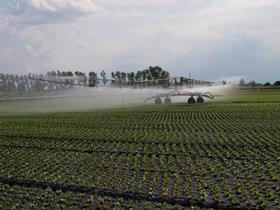
Supermarkets could have gaps on their salad shelves in the next two weeks as British lettuce production is hit by soaring temperatures.
According to British Leafy Salad Growers, lettuce stops growing when temperatures reach 30 degrees Celsius. The problem has been compounded by “unprecedented” high demand from shoppers seeking refreshing meals in the heat.
In the last week alone a record 18 million lettuces have been sold. In the same week last year UK retailers were topping out at volumes of around 13 million heads of lettuce during this peak demand period for leafy salads.
A spokesperson for the British Leafy Salad Growers said: “While it is great news that leafy salad sales are up around 40 per cent across all retailers, that’s just half the story. The record temperatures have stopped the UK lettuce crop growing. When the mercury hits 30 degrees Celsius lettuces can’t grow.
“In all of the major growing areas, from Cupar in Fife, through Preston, Lancs, to Ely in East Anglia and Chichester, Sussex, the hot weather has affected all our growers and we may be seeing some gaps on retailers’ shelves in the next two weeks as the heatwave continues.”
The pressure of increased demand and hot weather limiting supply means growers may turn to other sources of leafy salads to meet demand. In the summer it is too hot to grow large quantities of lettuce in Southern Europe where UK salads are grown in the winter. As a result, shoppers may start seeing lettuce from America on the shelves to beat the anticipated shortage.
Salad leaves is not the only crop to be affected according to BLS, with brassicas like broccoli also ceasing to grow in hot weather. They said the salad category is now under “intense pressure” as people look to salads to compliment their BBQs in the heat wave.
Last year British shoppers also faced lettuce shortages in supermarkets, but for the opposite reason. A Spanish washout during the winter, where the UK sources its lettuce during the cold months, saw yields fall to as low as 30 per cent on the year before.






No comments yet